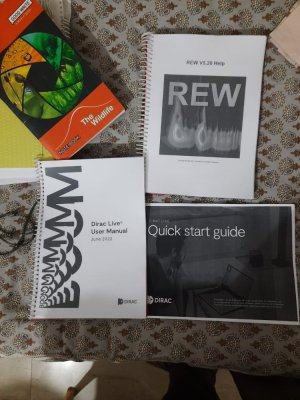In my limited experimentation with a small Qacousitcs 8 inch subwoofer, in 3 different rooms. I always ended up with the subwoofer placed right next to my sofa. It is easier to get a smoother bass response closer to the subwoofer than far away from it. So if you have the place, then place the subwoofer closer to your seat, as the AVR can delay the subwoofer to time align with the front and surrounding speakers.
Only in 2 channel systems we try to place subwoofer closer to the main speakers, so that both main speakers and subwoofer are approximately same distance from listening position. As 2 channel amps dont have any time delays or phase correction.
Edit -If placement next to seating position is not possible, then the next best location is in a corner, with the sub woofer placed as close as possible to the walls. The shorter the distance from the walls, the higher in frequency will be the bass cancellation in frequency. By getting this distance small, the frequency of cancellation will be way beyond the frequency the subwoofer is operating in. This will remove SBIR induced cancellation, but there will still be room induced peaks and troughs which have to be dealt via audyssey. Please read the below article for a detailed explanation :
Not hearing enough bass through your monitors? The distance between your room boundaries and speakers has a huge impact on your bass performance. This tutorial will show you specific strategies for placing your speakers to get a balanced bass response.
arqen.com
Iam aware that Iam suggesting two different places to try the subwoofer. As this is the only way to experiment to find out which works best in your room, and at your seating position. However, if you want to remove the guess work and do it more sceintifically, then try the below

Edit 2 - REW is free for a PC. In REW there is a free room simulator. You can measure the dimensions of your room, and enter them in this calcuator, with the location of your speakers, the subwoofer and your listening positon. This is a very simple and extremely easy to use calculator. And as you move the speakers and subwoofer, the calculator will show the frequency response at your seated position. So without having to do sub-crawls etc...one can find the optimum position for thier speakers and subwoofers for the best possible frequency response. Below is a youtube link to the same. All the best

.







